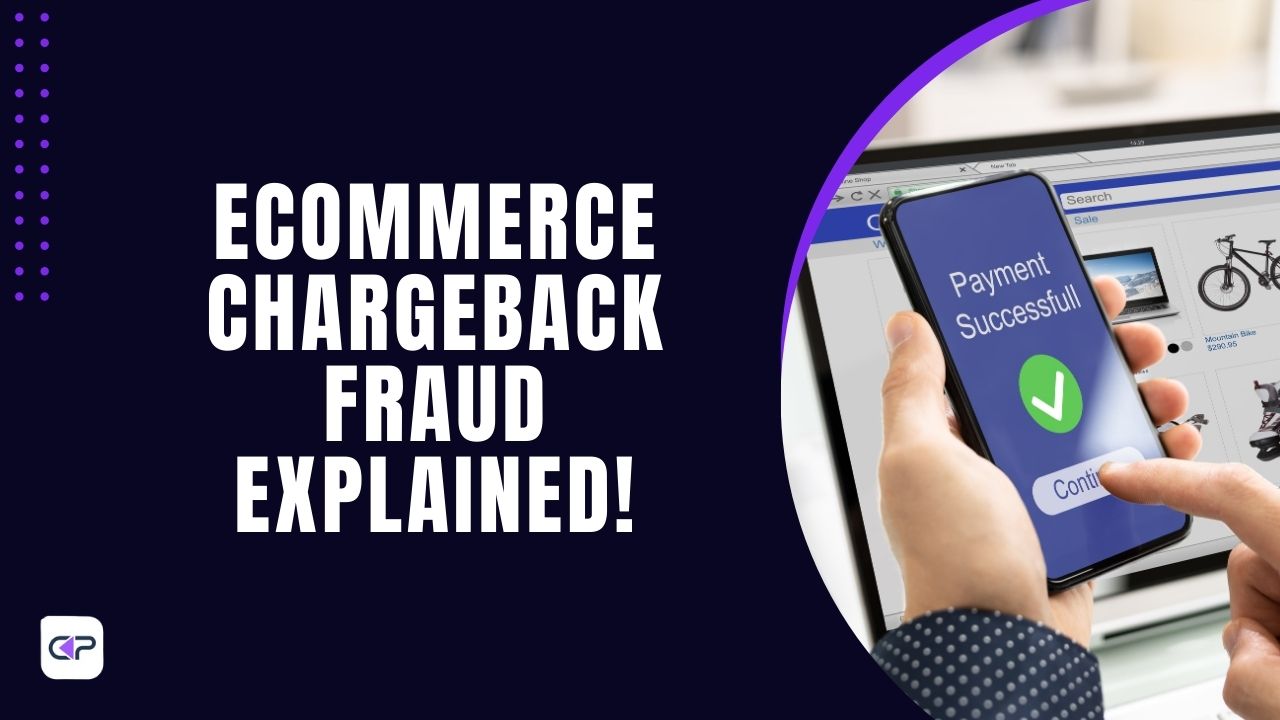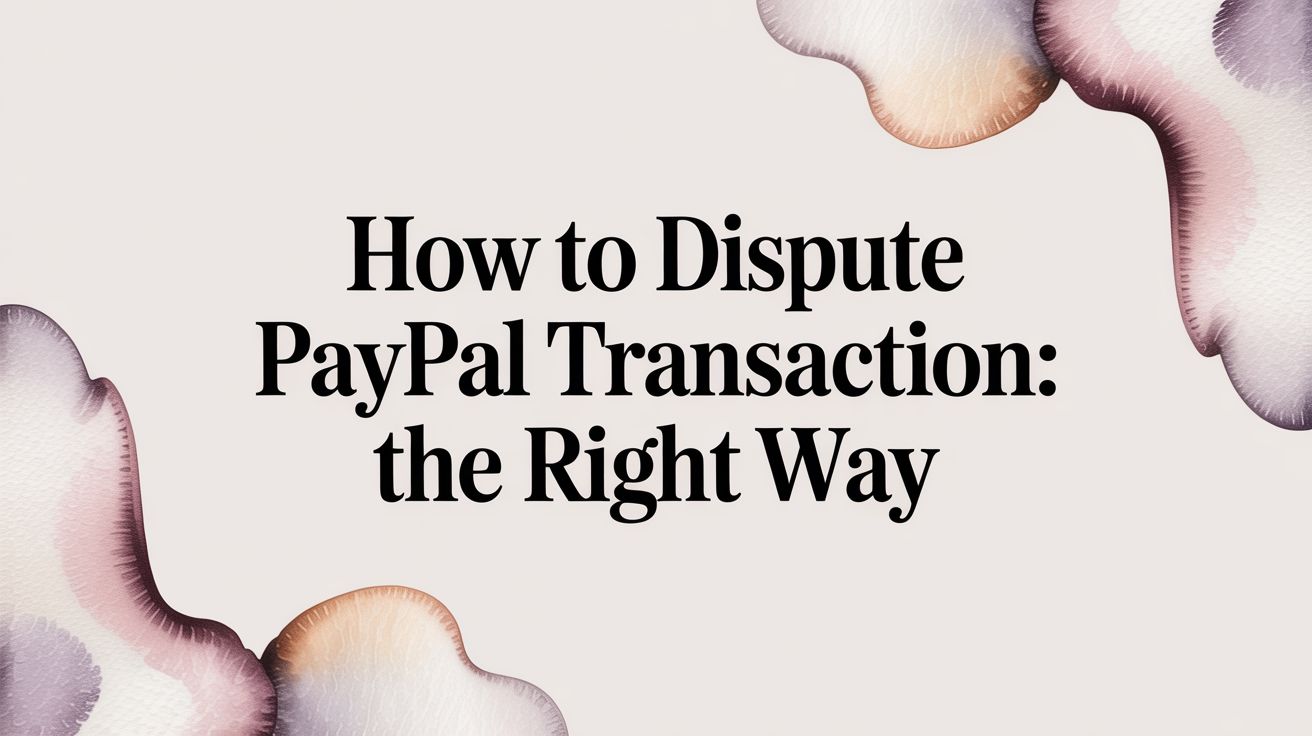
eCommerce fraud is a concerning challenge for online stores, with fraudulent chargebacks contributing to billions in lost revenue each year. This fraud drains financial resources and leads to increased fees, strained relationships with payment processors, and damaged brand reputation.
To help businesses combat this issue, it's essential to adopt a dual approach—preventing fraud before it happens and efficiently managing cases when fraud does occur.
In this guide, we will explore the best strategies for both preventing and managing eCommerce chargeback fraud, empowering businesses to protect their revenue, and reducing the impact of fraudulent transactions.
What is eCommerce Chargeback fraud?
eCommerce chargeback fraud occurs when a customer disputes a legitimate transaction and requests a chargeback from their bank or credit card issuer for an online purchase.
In most cases, the fraudulents have already received the product or services but falsely claim they did not, or allege unauthorized use of their payment method.
This illegal way is also referred to as friendly fraud!
This eCommerce fraud affects stores' revenue, increases operational and managerial costs, and damages relationships with payment processors or banks.
While chargebacks were originally designed to protect consumers from genuine fraud. Now, fraudulants exploit the system to reverse legitimate transactions, leading to revenue loss and an increase in fraud detection expenses for online stores.

Magnitude on Impact
The financial burden of eCommerce chargeback fraud is substantial and increasing. According to a report by Juniper Research, merchants are expected to lose $130 billion globally between 2018 and 2023 due to online payment fraud, with chargebacks constituting a significant portion of this loss. The direct costs include lost sales, chargeback fees, and shipping costs. However, indirect costs—such as higher processing fees and strained relationships with payment processors—further amplify the impact.
Moreover, businesses with high chargeback ratios risk being labeled as "high risk" by payment processors, which can result in higher transaction fees, frozen accounts, or termination of merchant accounts. These cascading effects make it crucial for businesses to implement proactive chargeback fraud prevention strategies.
Tips for eCommerce Chargeback Fraud Prevention
Preventing fraud requires a proactive approach to secure transactions, verify customer authenticity, and mitigate risks before fraud occurs.
Here are key strategies to reduce fraudulent transactions that lead to chargebacks:
1. Implement Strong Customer Authentication (SCA)
One of the most effective ways to prevent fraud is to strengthen the authentication process. By using multi-factor authentication, ensure that the transaction is being conducted by a legitimate cardholder.
Integrating technologies like 3D Secure 2 (3DS2) adds protection, requiring customers to authenticate themselves through a secure process that minimizes fraud.
2. Use Advanced Fraud Detection Tools
Utilize real-time fraud detection tools powered by artificial intelligence (AI) and machine learning to analyze transaction data and detect suspicious patterns.
These systems flag high-risk transactions for manual review, helping to prevent fraudulent orders before they are processed.
Many fraud detection tools also assign risk scores to each transaction based on user behavior, device fingerprinting, and purchase history, enabling businesses to take immediate action.
3. Maintain Up-to-Date Address Verification Systems (AVS)
AVS helps verify that the billing address provided by the customer matches the one on file with the card issuer.
Ensuring AVS is active and regularly updated can prevent fraudulent transactions that use stolen card details.
Combining AVS with CVV checks creates a strong defense against fraudsters attempting to misuse credit card information.
4. Utilize Fraud Prevention Services Offered by Payment Gateways
Many payment processors and gateways offer fraud prevention services that include transaction monitoring, encryption, and fraud scoring.
Take advantage of these tools to add an additional layer of security to your payment processing.
By integrating fraud detection protocols directly into the payment gateway, you can filter out high-risk transactions before they lead to chargebacks.
5. Monitor for Unusual Buying Patterns
Fraudsters often exhibit unusual buying behaviors such as purchasing high-value items in bulk or making repeat purchases within a short time frame.
By closely monitoring your transactions for these behaviors, you can identify and block potentially fraudulent orders before they are completed.
Implement real-time monitoring systems that alert your team when abnormal patterns arise.
6. Offer Risk-Based Authentication for High-Risk Transactions
For transactions flagged as high-risk, consider implementing risk-based authentication methods that require additional verification steps.
This includes sending a one-time passcode to the customer’s mobile device or requiring them to answer security questions.
Risk-based authentication minimizes friction for low-risk transactions while adding security measures for transactions that could be fraudulent.
By adopting these preventive strategies, eCommerce businesses will significantly reduce the risk of chargeback fraud before it even occurs. Investing in fraud prevention not only protects your revenue but also fosters trust and loyalty among your customers.
Ways to Manage eCommerce Chargeback Fraud Cases
Once fraud occurs managing it efficiently is critical to minimizing losses, protecting the business’s reputation, and preventing future disputes.
Fraud management involves timely dispute resolution, documentation, and communication with payment processors.
Here are essential strategies for handling fraud cases:
1. Quickly Identify and Isolate Fraudulent Transactions
The first step in managing fraud cases is to identify suspicious transactions.
Leverage transaction monitoring systems that flag fraud attempts based on unusual activity such as large orders, multiple failed payment attempts, or shipping to high-risk locations.
The faster fraudulent transactions are flagged, the sooner you take action to prevent further damage, such as canceling orders, issuing refunds, or halting shipments.
2. Gather and Preserve Transaction Evidence
To effectively dispute a chargeback fraud case, businesses must collect all relevant transaction data.
This includes order confirmations, customer communications, shipping details, proof of delivery, and any other supporting documentation that proves the legitimacy of the transaction.
Having detailed, organized records is crucial for chargeback representment and arbitration.
3. Leverage Chargeback Alerts and Representment Services
Many payment processors offer chargeback alert services, which notify merchants of disputes before they escalate.
This allows businesses to resolve the issue with the customer directly, potentially stopping the chargeback process.
Additionally, use chargeback representment services that help merchants dispute and reverse illegitimate chargebacks by preparing detailed evidences. These services increase the chances of successfully challenging fraud claims.
4. Use a Chargeback Management System
A chargeback management system centralizes all aspects of fraud management, from tracking disputes to automating responses.
Implementing such a system can streamline the process, reducing manual effort and improving accuracy.
These systems often come with built-in templates for evidence submission and reminders to meet deadlines, helping eCommerce businesses stay on top of their fraud cases and increase their win rates.
5. Communicate with Payment Processors and Banks
Establishing clear and timely communication with payment processors and issuing banks is key to managing fraud cases effectively.
Communication helps resolve disputes faster and builds stronger relationships with financial institutions.
By collaborating closely with your payment partners, you increase your chances of recovering lost revenue due to fraud.
6. Leverage Chargepay for Chargeback Fraud Management
Chargepay stands out as one of the most comprehensive solutions for managing eCommerce chargeback fraud. It utilizes AI to streamline every step of the management process, from identifying fraudulent transactions to automating the dispute resolution workflow.
With Chargepay, businesses quickly gather and submit evidence, track ongoing disputes, and increase the chances of reversing illegitimate chargebacks.
Chargepay’s advanced algorithms also allow businesses to analyze fraud patterns and continuously improve their fraud management strategies over time.
By automating much of the manual labor involved in chargeback disputes, Chargepay minimizes the resources spent on managing fraud cases, allowing businesses to focus on growth while keeping fraud under control.
For businesses looking for a robust, AI-driven chargeback management solution, Chargepay is necessary to stay ahead of fraudulent transactions and ensure efficient resolution of chargeback cases.
Book a demo today to secure your business revenue.







.svg)







.svg)
.svg)
.svg)